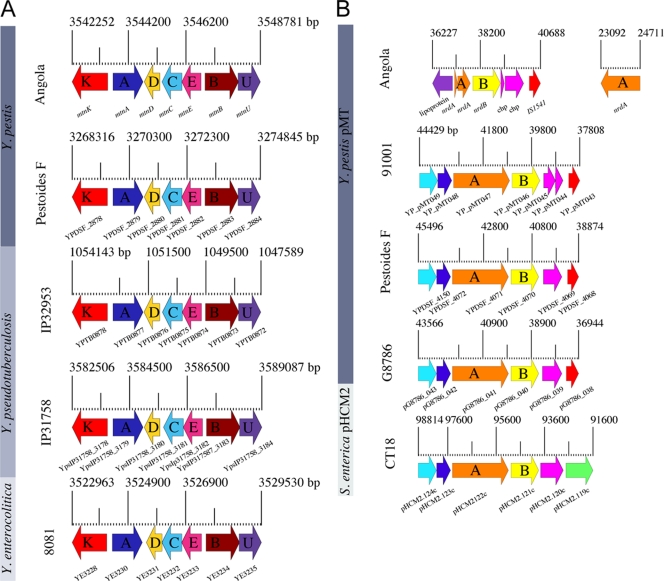FIG. 2.
Ancestral genome features of Y. pestis Angola. (A) Prevalence of the methionine salvage locus. Strain Angola and the deep-branching Pestoides group isolate F are the only known Y. pestis isolates that carry the methionine salvage pathway on their chromosomes. Its presence in the phylogenetic ancestors Y. pseudotuberculosis and Y. enterocolitica argues for a secondary loss of this metabolic property in descending Y. pestis isolates. The scale, in base pairs, indicates the genomic location of the methionine salvage locus composed of the seven genes mtnKADCEBU. Genes shared between these highly conserved and syntenically arranged loci are colored accordingly. (B) Prevalence of the nrdAB locus. Strain Angola encodes another locus on its chimeric plasmid, the ribonucleotide diphosphate reductase nrdAB operon, which most likely was lost secondarily in descending Y. pestis isolates. Corresponding loci are found only in other deep-branching Y. pestis strains: the Pestoides group isolates F and G8786 and the 0.PE4 microtus strain 91001. Besides Y. pestis, this locus also is present in the phylogenetically related pHCM2 plasmid of S. enterica CT18. In Y. pestis strain 91001, one of the two conserved hypothetical proteins appears to be degenerated (YP_pMT44, YP_pMT45). The scale, in base pairs, indicates the genomic location of the nrdAB operon. Genes shared between these loci are colored accordingly.

